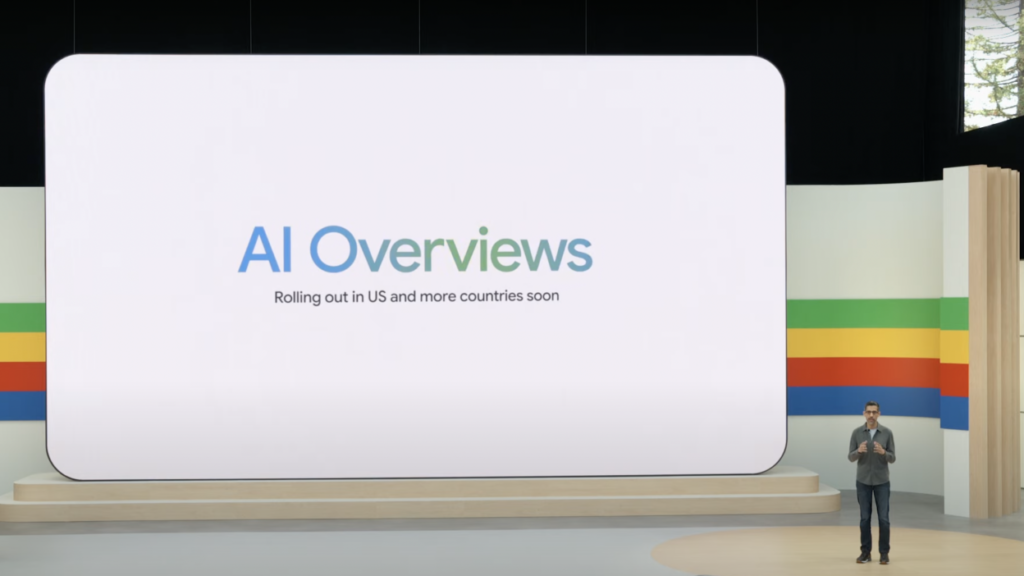In today’s AI-driven search landscape, traditional SEO is no longer enough. Enter Generative Engine Optimization (GEO)—the strategy of optimizing your content to appear in AI-generated results, such as Google’s AI Overviews, Perplexity, ChatGPT, and Gemini.
If you’re serious about future-proofing your digital presence, mastering GEO is no longer optional—it’s essential.
What Is Generative Engine Optimization?
GEO refers to the process of tailoring your content so that it’s recognized, cited, or referenced by generative AI search engines. These engines don’t just index and rank pages—they synthesize responses using natural language, pulling data from credible, high-authority sources.
That means you’re no longer just optimizing for a spot on Google’s 1st page. You’re also aiming to be cited or referenced by AI models that generate answers based on real-time data and contextual understanding.
Imagine someone asks ChatGPT, “What are the best digital marketing strategies for SaaS startups?” If your content is high-quality, clear, and authoritative, there’s a good chance it could be cited in that AI-generated response.
How Do Generative Engines Work?
Generative engines use large language models (LLMs) trained on vast datasets from across the web. When a user submits a query, the LLM retrieves, processes, and generates a response based on patterns, relevance, and authority.
For example, if you ask ChatGPT about marketing strategies, it may cite insights from HubSpot, Neil Patel, Campaign Monitor—or your blog, if it’s optimized correctly.
Unlike traditional search engines that serve a list of links, generative engines deliver synthesized responses. The sources behind those responses are where your brand visibility comes in.
GEO vs Traditional SEO: How They Compare
| Similarities | Differences |
| Both aim to answer search intent clearly and accurately | SEO ranks pages; GEO gets you mentioned in AI-generated responses |
| Both focus on E-E-A-T (Experience, Expertise, Authoritativeness, Trustworthiness) | SEO follows algorithm updates; GEO follows AI model behavior and training |
| Both require keyword targeting and clear structure | GEO needs content that’s NLP-friendly and easy to parse |
| Both care about user experience, site speed, and mobile friendliness | GEO prioritizes content that’s summarized well by AI engines |
| Both analyze trends and data to stay relevant | GEO requires tracking AI citations and referral traffic from LLMs |
4 Steps to Master Generative Engine Optimization
1. Start with Strong SEO Foundations
To rank in generative AI outputs, you must already rank well in traditional search engines. AI models often rely on existing organic authority and credible citations.
Make sure your technical SEO, keyword targeting, and content quality are already aligned with best practices.
2. Study Competitors in AI Results
Just like with traditional SEO competitor research, observe who appears in AI Overviews, Perplexity responses, or ChatGPT citations. Search common industry questions and analyze what kind of content is getting surfaced.
Look at:
- Their formatting
- The clarity of their answers
- Use of statistics or step-by-step processes
- How they integrate authority signals like backlinks or schema
Then, reverse-engineer your own content to compete in that space.
3. Optimize for AI Overviews

Recent studies show AI Overviews appear in 74% of problem-solving queries. To get featured:
- Write clear, concise answers (like those in featured snippets)
- Include FAQ sections with specific queries
- Use trustworthy data and statistics
- Incorporate LSI keywords to enhance semantic accuracy
- Align with Google’s Helpful Content update
- Build authority through digital PR, backlinks, and high-quality internal linking
- Include structured formats (bullet points, step-by-step guides, tables)
- Add schema markup where possible
Also, publish real proof—like case studies, client results, testimonials, and industry recognition. These reinforce trust for AI models and readers alike.
4. Get Featured on ChatGPT, Perplexity, and Gemini
These platforms often cite:
- Authoritative websites
- Well-structured, informative content
- Pages with quality backlinks and proper schema
- Consistently updated resources
To boost your chances:
- Regularly update content with fresh insights
- Use structured data and schema markup
- Integrate plugins or APIs where possible (especially for apps or tools)
- Encourage shares and backlinks through valuable, original content
Final Thoughts: Is GEO Worth It?
Absolutely. Generative Engine Optimization is no longer a theory—it’s a strategic frontier for forward-thinking brands.
While SEO remains your foundation, GEO gives you a new opportunity: becoming the trusted source AI models refer to when answering queries in real-time.
At Search Engine Star, we believe the future of search belongs to those who adapt early. If you want help optimizing your content for both SEO and GEO, our experts are ready.


Leave a Reply